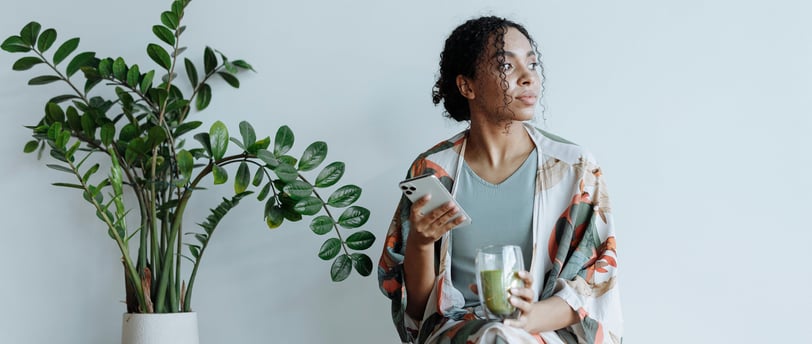10 Tips for Healthy Indoor Plants
2/15/20243 min read


Introduction
Indoor plants not only add beauty and vibrancy to our living spaces but also provide numerous health benefits. They purify the air, reduce stress, and create a calming atmosphere. However, keeping indoor plants healthy and thriving requires proper care and attention. In this article, we will provide you with 10 essential tips to ensure your indoor oasis flourishes with vitality and beauty.
1. Choose the Right Plants
Before bringing home any indoor plants, it's crucial to consider the lighting conditions and temperature of your space. Different plants have different light and temperature requirements. Some plants thrive in bright, direct sunlight, while others prefer indirect or low light conditions. Research the specific needs of the plants you are interested in to ensure they will thrive in your home.
2. Provide Adequate Lighting
Light is one of the most important factors for the health of indoor plants. Most plants require a good amount of light to perform photosynthesis and grow properly. Place your plants near windows that receive bright, indirect sunlight. If your space lacks natural light, consider using artificial grow lights to supplement the lighting needs of your plants.
3. Water Properly
Watering is another crucial aspect of indoor plant care. Over-watering or under-watering can lead to root rot or dehydration, respectively. The watering needs of plants vary, so it's important to research the specific requirements of each plant. As a general rule, water your plants when the top inch of soil feels dry. Use room temperature water and ensure proper drainage to prevent water-logging.
4. Choose the Right Soil
The soil you choose for your indoor plants plays a vital role in their overall health. Opt for a well-draining potting mix that retains enough moisture without becoming waterlogged. Avoid using garden soil, as it may contain pests or diseases that can harm your plants. Consider adding organic matter, such as compost or peat moss, to improve the soil's fertility and drainage.
5. Maintain Proper Humidity
Indoor environments are often drier than the natural habitat of many plants. To ensure optimal growth, it's important to maintain proper humidity levels. Grouping plants together can create a micro-climate with increased humidity. Alternatively, you can use a humidifier or place a tray filled with water near your plants to increase moisture in the air.
6. Prune and Trim Regularly
Regular pruning and trimming are essential for maintaining the shape and health of your indoor plants. Remove any dead or yellowing leaves, as they can attract pests or diseases. Pruning also helps promote new growth and prevents overcrowding. Use clean and sharp pruning tools to avoid damaging the plants.
7. Fertilize Wisely
Indoor plants require regular feeding to ensure they receive essential nutrients. Use a balanced, water-soluble fertilizer specifically formulated for indoor plants. Follow the instructions on the packaging and avoid over fertilizing, as it can lead to nutrient burn and other problems. Fertilize your plants during their active growing season, typically spring and summer.
8. Monitor for Pests
Pests can quickly infest indoor plants and cause significant damage if left untreated. Regularly inspect your plants for signs of pests, such as webs, sticky residue, or chewed leaves. If you notice any pests, isolate the affected plant and treat it immediately. There are various organic and chemical pest control methods available, so choose the one that suits your preferences.
9. Rotate Your Plants
Rotate your indoor plants every few weeks to ensure even growth and prevent them from leaning towards the light source. This will help maintain a balanced shape and prevent one side of the plant from receiving more light than the other. Rotating your plants also allows you to inspect them thoroughly and identify any issues early on.
10. Observe and Learn
Finally, the key to successful indoor plant care is observation and learning. Pay attention to how your plants respond to different conditions, such as light levels, watering routines, and temperature changes. Adjust your care routine accordingly to meet the specific needs of your plants. Over time, you will develop a better understanding of your plants and become a more confident indoor gardener.
Conclusion
By following these 10 tips for healthy indoor plants, you can create a thriving indoor oasis that brings beauty and vitality to your living space. Remember to choose the right plants, provide adequate lighting and watering, use the appropriate soil, maintain proper humidity, prune and trim regularly, fertilize wisely, monitor for pests, rotate your plants, and observe and learn from your plants' responses. With proper care and attention, your indoor plants will flourish and provide you with years of enjoyment.
